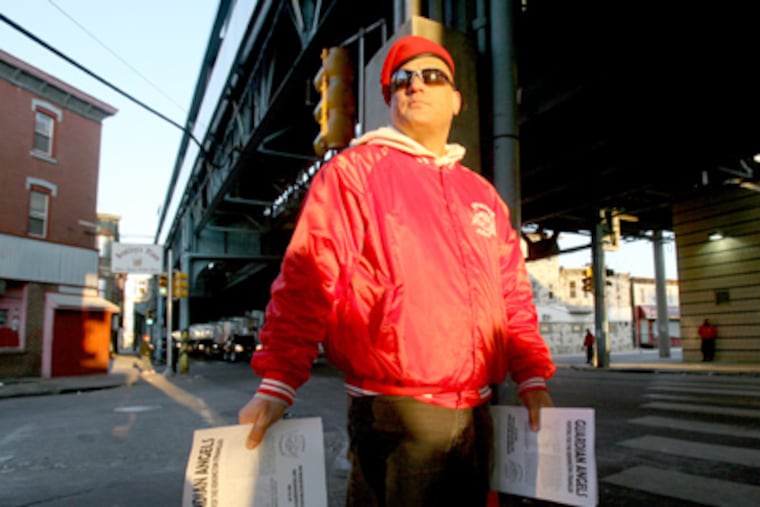Kensington strangling victims were easy prey for a killer
The man preying on women in Kensington has chosen his victims well. Addicted and swirling through the neighborhood's dangerous drug culture, where life and death happen in abandoned buildings and desolate alleys, the victims already existed on the edges of society.

The man preying on women in Kensington has chosen his victims well.
Addicted and swirling through the neighborhood's dangerous drug culture, where life and death happen in abandoned buildings and desolate alleys, the victims already existed on the edges of society.
None of the three women found dead since Nov. 3 lived in Kensington, meaning they were part of a transient population of outsiders with few ties to the area.
Investigators trying to find the killer must wade into a community of people who are, at a minimum, wary of police.
"Even if you make the rounds out there, the people - the prostitutes and the drug addicts - they're not going to come in on their own," Homicide Detective Eddie Rocks said. "A lot of them have bench warrants."
The hurdles police face in solving the Kensington strangulations are also the factors that make prostitutes such inviting and frequent targets for serial killers, experts say.
"The reason they're easy targets . . . is because they're a hard-to-reach population. Homeless, the same kind of thing," said Jon Shane, a retired Newark, N.J., police captain and an associate professor of criminal justice at John Jay College. "They're essentially underground."
Often, he said, people in those circumstances have no employment, no driver's licenses, nothing to tether them to "normal society."
If they're known among their peers, it's usually by a street moniker, and the relationships are superficial.
"No one is looking for them," Shane said, "and they're not looking for anyone."
Rocks, who is not involved with the Kensington cases, investigated the so-called Frankford slasher, who killed as many as nine women in that neighborhood, just north of Kensington, in the late 1980s.
A suspect was identified, but he died before any charges could be brought.
"It seems like we get these every so often," Rocks said of the deaths of prostitutes.
The most famous recent cases were the strangulations of four Atlantic City prostitutes whose bodies were found dumped in a marshy area outside town in 2006. That case remains unsolved.
This week, police in New York were investigating the discovery of four women's bodies along the southern shore of Long Island.
The first Kensington victim - 21-year-old Elaine Goldberg - was found strangled on Nov. 3 in a lot on Ruth Street. On Nov. 13, 35-year-old Nicole Piacentini was discovered blocks away at an abandoned building.
Their families said both victims had struggled with drug addiction. DNA evidence determined the women were killed by the same man.
On Wednesday, a third victim, 27-year-old Casey Mahoney, was discovered in the woods above the railroad tracks that run along East Tusculum Street. She, too, had a history of drug problems.
DNA test results have not returned, but police say her killing fits the pattern and most likely is linked to the others.
Philadelphia police have formed a task force and flooded the neighborhood with uniformed officers and investigators from the vice, special victims, and homicide units.
Deputy Police Commissioner William Blackburn said police had arrested more than 100 men in the area on charges of soliciting prostitutes and had taken DNA swabs from many of them. Most of those results are pending.
Blackburn said the department had gotten calls from the public, but that police needed a major break in the case.
"It's frustrating for the department," he said. "It's frustrating for the investigators. There are a lot of different units working on this, doing all they can, and we were hoping by this time we would have this person in cuffs."
With the "no snitching" street ethos, good witnesses are rare, Shane said. Prostitutes and addicts are especially reluctant to speak to police, he said, even when they are potential victims.
"The perception isn't that you're trying to help catch a serial killer," he said. "It's that you're diming somebody out."
Catching the killer in Kensington also is complicated by the fact that rapes and other assaults are not uncommon there.
Police have looked into a number of other complaints since the first victim was found, including separate women who said they were choked and raped, and another who said a man attacked her with a brick and a pair of scissors.
None of those attacks has been linked to the three homicides.
About 12 members of the Guardian Angels were patrolling in the area of Kensington Avenue and Somerset Street Sunday.
Curtis Sliwa, founder of the New York anticrime organization known for its red berets, said the group would distribute fliers with a sketch of the attacker. Its members will also offer escorts to women in the area, especially at night, Sliwa said.
"We know that a lot of times because of the subculture . . . people may not be willing to go to the police, but they may be willing to talk to us. Then we'll back-channel [that information] to the police and investigators," Sliwa said.
As one woman working a stretch of Kensington Avenue said last week, "Even if there wasn't some guy making the newspapers, there's still somebody out there who would do [something] like that."
"It's a different situation because of the area up there. How many times does this happen?" Rocks asked. "Since you have the killings up there, you have to look at everything in a different light."
After Mahoney's body was discovered Wednesday, Blackburn said the killer seemed to be getting "bolder and bolder."
"This guy, he sees all the police out there. He sees the people getting swabbed," Rocks said. "He's still out there."